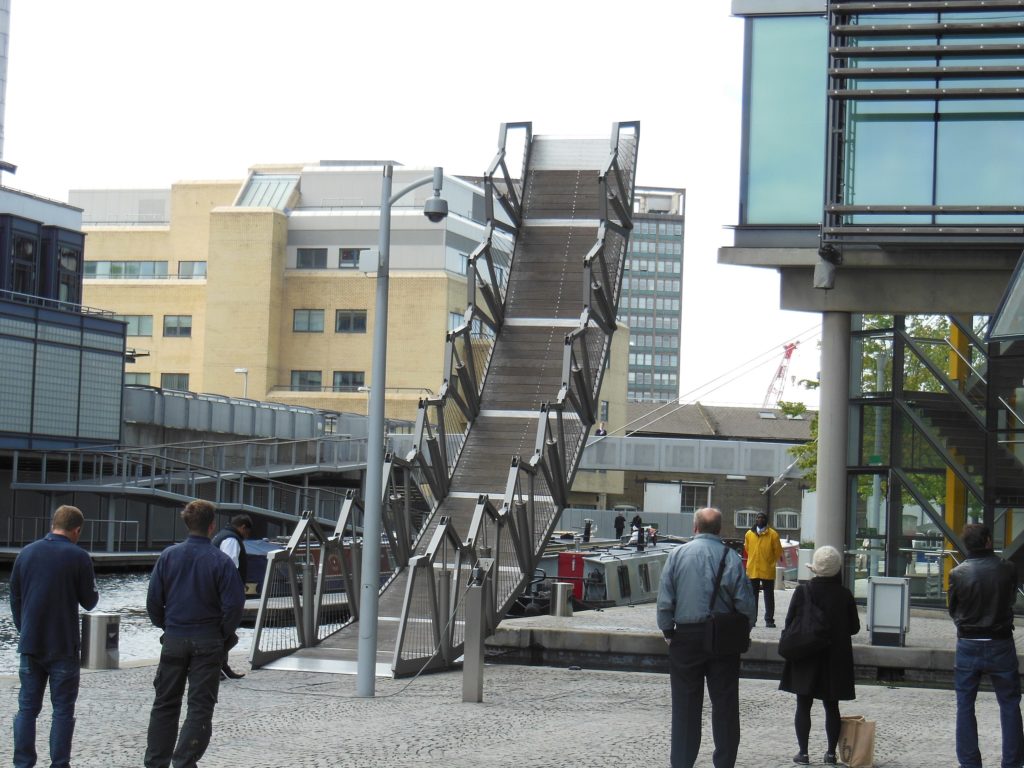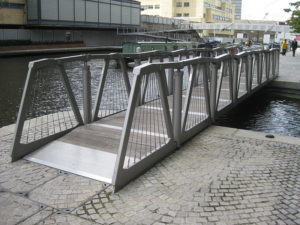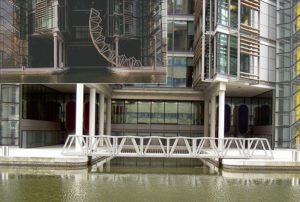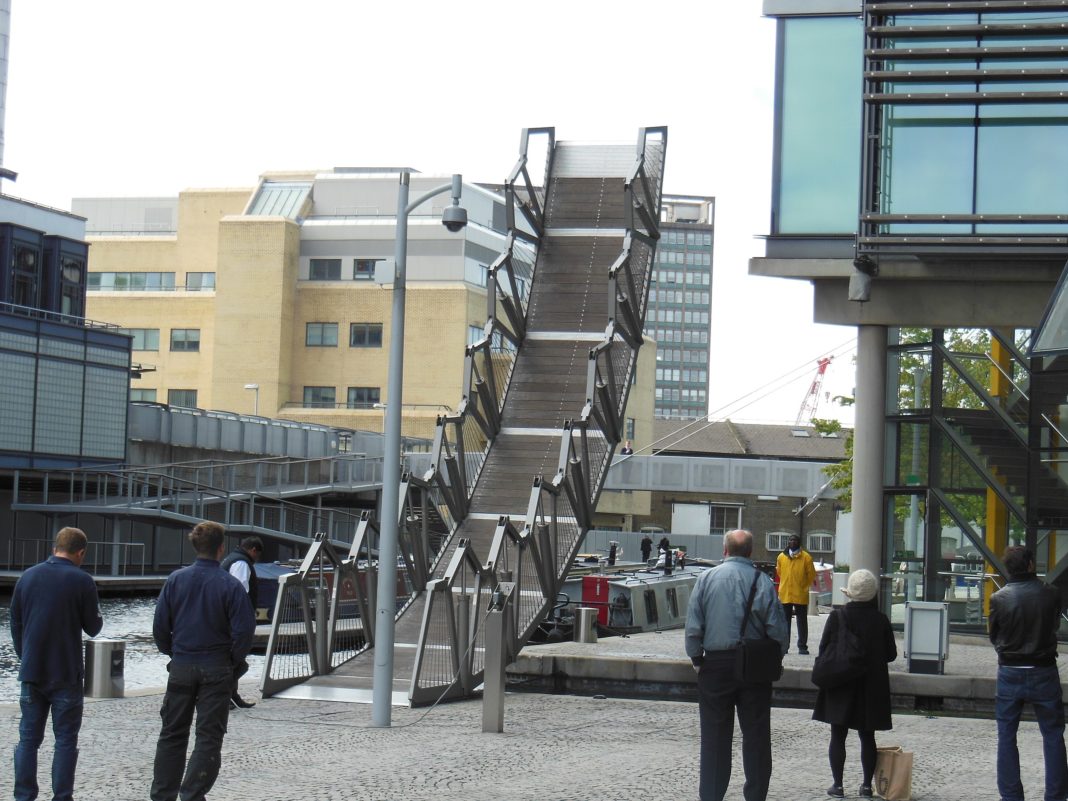The Rolling Bridge was conceived by Thomas Heatherwick. It consists of eight triangular sections hinged at the walkway level and connected above by two-part links that can be collapsed towards the deck by hydraulic cylinders mounted vertically between the sections.

When extended, it resembles a conventional steel and timber footbridge and is 12 meters long. To allow the passage of boats, the hydraulic pistons are activated and the bridge curls up until its two ends join, to form an octagonal shape measuring one-half of the waterway’s width at that point.

The bridge won the British Constructional Steelwork Association’s British Structural Steel Design Award.

Traditional use of the term “rolling bridge” dates from at least the Victorian era and is used to describe a type of retractable drawbridge used to span a ditch or moat surrounding a fortification. That type of bridge is not hinged and remains horizontal when it is rolled inside the gates of a fort. Modern versions are called retractable bridges or thrust bridges. One particular version of the rolling bridge type was known as the Guthrie rolling bridge, examples of which may still be seen at Fort Nelson, Portsmouth. Certain types of bascule bridges roll on an arc; an example is the Pegasus Bridge.

According to Wikipedia















